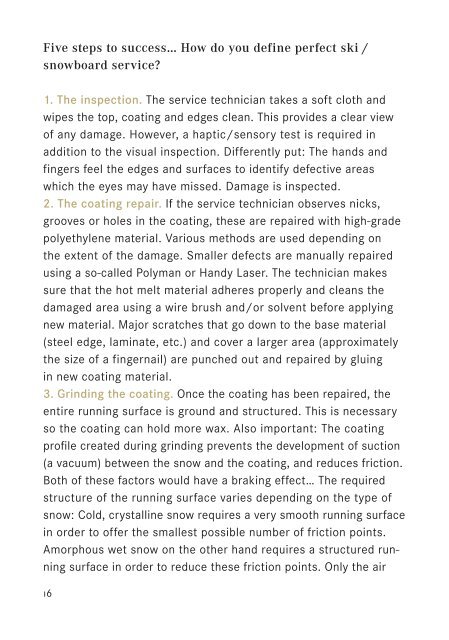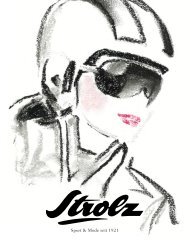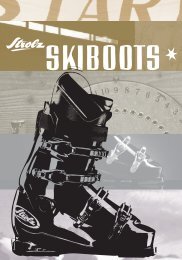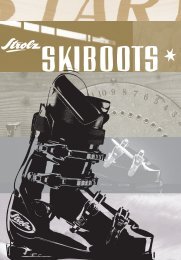Create successful ePaper yourself
Turn your PDF publications into a flip-book with our unique Google optimized e-Paper software.
Five steps to success… How do you define perfect ski /<br />
snowboard service?<br />
1. The inspection. The service technician takes a soft cloth and<br />
wipes the top, coating and edges clean. This provides a clear view<br />
of any damage. However, a haptic/s<strong>en</strong>sory test is required in<br />
addition to the visual inspection. Differ<strong>en</strong>tly put: The hands and<br />
fingers feel the edges and surfaces to id<strong>en</strong>tify defective areas<br />
which the eyes may have missed. Damage is inspected.<br />
2. The coating repair. If the service technician observes nicks,<br />
grooves or holes in the coating, these are repaired with high-grade<br />
polyethyl<strong>en</strong>e material. Various methods are used dep<strong>en</strong>ding on<br />
the ext<strong>en</strong>t of the damage. Smaller defects are manually repaired<br />
using a so-called Polyman or Handy Laser. The technician makes<br />
sure that the hot melt material adheres properly and cleans the<br />
damaged area using a wire brush and/or solv<strong>en</strong>t before applying<br />
new material. Major scratches that go down to the base material<br />
(steel edge, laminate, etc.) and cover a larger area (approximately<br />
the size of a fingernail) are punched out and repaired by gluing<br />
in new coating material.<br />
3. Grinding the coating. Once the coating has be<strong>en</strong> repaired, the<br />
<strong>en</strong>tire running surface is ground and structured. This is necessary<br />
so the coating can hold more wax. Also important: The coating<br />
profi le created during grinding prev<strong>en</strong>ts the developm<strong>en</strong>t of suction<br />
(a vacuum) betwe<strong>en</strong> the snow and the coating, and reduces friction.<br />
Both of these factors would have a braking effect… The required<br />
structure of the running surface varies dep<strong>en</strong>ding on the type of<br />
snow: Cold, crystalline snow requires a very smooth running surface<br />
in order to offer the smallest possible number of friction points.<br />
Amorphous wet snow on the other hand requires a structured running<br />
surface in order to reduce these friction points. Only the air<br />
16






